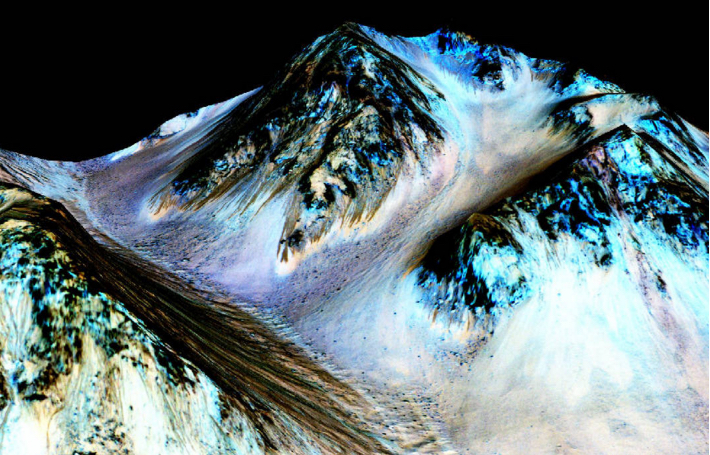![NASA has determined that the black lines, pictured above in a false color image that makes them more observable, are traces of flowing water that appears and disappears throughout the seasons. [NASA/JPL-Catech/University of Arizona/AP]](http://www.jstudentboard.com/reporter/wp-content/uploads/2015/11/mars.jpg)
[NASA/JPL-Catech/University of Arizona/AP]
Scientists had previously discovered water in the form of ice on Mars, but this is the very first time NASA was able to find evidence regarding liquid water on the planet’s surface. Black streaks detected by the Mars Reconnaissance Orbiter (MRO) played a significant role in this discovery. NASA concluded that these streaks are traces made by the flows of liquid water during different seasons. After NASA announced this discovery at a conference in Washington DC, Lujendra Ojha, a graduate student from Georgia Institute of Technology who first noticed these streaks, published her work on Nature Geoscience.
This discovery was in the international spotlight because it signifies the possibility of life on Mars. Observation of solid or gaseous forms of water in other planets or meteorites are common. However, discovering liquid water in outer space is an extremely rare instance.
Hyoungmin Kim, a student attending Gyeonggi Science High School of the Gifted, explained to JSR why she is interested in the implications of the finding.
“Biology believes that the origin of life, referring to the alteration from nonorganic state to organic state, began underwater. It also believes that water protected weak organisms during their early stages from strong electromagnetic waves,” Kim Told JSR. “Therefore, many scientists consider it impossible for organisms to survive without water.”
When asked about the significance of this discovery, Kim said, “Although there has been a recent discovery of organisms living in arsenic, it is a widely accepted fact that all creatures need liquid water for survival. Therefore, it is more rational to conclude that the discovery made by NASA suggests a possibility of living things although it probably is some kind of a microorganism rather than an actual creature.”
Kim added, “If an organism exists in Mars, it suggests the possibility of life in Mars for us. As a result, there will likely be more experiments related to terraforming. There could also be more experiments regarding Mars to determine the sources and the components of water.”
She continued, “Moreover, experiments determining minimum conditions essential for maintenance of sustainability will receive the spotlight again. There could be more experiments regarding the minimum amount of oxygen, minimum amount of water, and maximum amount of ultraviolet light needed for organisms to survive.”
No one knows what the future holds. Maybe this little red planet will be the future home of humans! It is important, however, that we restrain ourselves from making any further assumptions before more discoveries are made.

